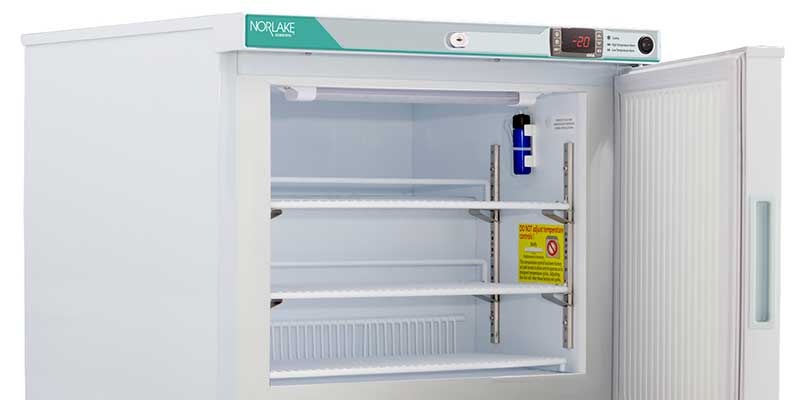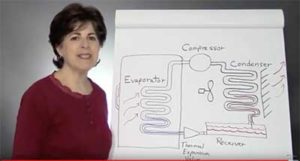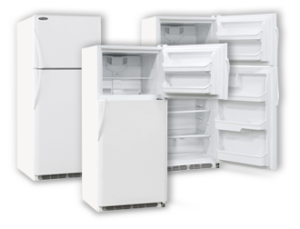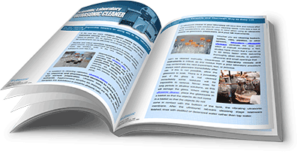
How Scientific Refrigeration Equipment Works
Scientific refrigerators, also called pharmaceutical refrigerators or lab refrigerators, meet stringent requirements essential to protect contents from temperature fluctuations above or below those recommended by content manufacturers. Residential-type refrigerators do not make the grade. Reasons described in this post will help you understand how scientific refrigerators work.
- How scientific refrigerators “make cold”
- The difference between manual and auto defrost scientific refrigerators
- Tips on proper use of your scientific refrigerator
- Ongoing care and maintenance of scientific and pharmaceutical refrigerators
- Tips on moving your scientific refrigerator
How Scientific Refrigeration Equipment Makes Cold
The first thing you need know is that when a liquid evaporates it absorbs heat and when a gas condenses to a liquid it releases heat. Got that? Good.
Let’s start with the receiver where the liquid refrigerant is stored under high pressure. The liquid passes through a thermal expansion valve causing a sudden reduction in pressure. When the pressure is reduced some of the liquid evaporates and this causes the remaining liquid to cool.
(Try this out with a compressed air keyboard cleaner or air horn and you’ll note that the can gets cold as you release the contents.)
The cold refrigerant passes through the evaporator coil absorbing heat from the space inside the refrigerator.
During this cycle the liquid refrigerant completely evaporates inside the evaporator and becomes a low pressure gas. This gas enters the electrically powered compressor where it is recompressed to a high pressure.
(If you remember blowing up a patched-up inner tube at the local gas station before going swimming in the local creek or lake, you’ll remember that the tube warms up when it fills.)
Then it is directed into the condenser (which is usually on the back of the refrigerator) to be cooled by a fan. This condenses it back into a liquid directed back to the receiver. The cycle is repeated.
The condenser dissipates heat.
Most condensers have a fin and tube design with a motor-driven fan. The fan forces air through the fin and tube assembly to drive heat away from the condenser’s coils. You can feel this heat coming off the coils, which makes it important to place your scientific refrigerator in such a way to allow the heat to dissipate.
These cycles cause frost to accumulate on the unit’s evaporator coils and, if allowed to build up will eventually stop heat transfer and the system would stop working.
Read next our explanation on manual defrost and auto-defrost scientific refrigeration systems to understand how frost is removed from the evaporator coils.
How Manual Defrost vs. Auto Defrost Scientific Refrigeration Systems Work
Most folks are familiar with the difference between manual and automatic defrost freezers, but such is not always the case with manual and auto defrost refrigerators.
An automatic defrost scientific refrigerator is the most popular type of lab refrigerator. More than likely (but not always) it is probably the type of unit you want.
During the automatic defrost cycle the compressor shuts off and a fan blows air over the coils to remove frost. Most models also have internal fans that circulate the air keeping the temperature inside the cabinet uniform.
A manual defrost scientific refrigerator has no fan to circulate the cold air and no timed defrost cycle.
It has copper tubing with refrigerant inside the sidewalls, back, and top of the unit. Because there’s no fan, samples inside the refrigerator won’t dry out.
But for the same reason moisture that condenses on the inside walls must be wiped down every few days. Manual defrost scientific refrigerators are recommended when it’s important to protect samples from drying out.
Tips on Proper Use of your Scientific Refrigerator
Now that you know all about the differences and choices between manual and auto-defrost scientific refrigerators here are some tips on using them.
Scientific and pharmaceutical refrigerators represent substantial investments necessary to insure compliance with storage regulations appropriate to your industry.
If these units malfunction due to improper operation and maintenance, your organization is not only subject to being cited for non-compliance by the FDA and/or other regulatory authorities but also the financial loss of the contents in the lab refrigerator.
While lab refrigerator manufacturers provide detailed instructions on the proper setup and use of these units, operating procedures should be detailed in your organization’s operations manual to govern their use and maintenance during their service life.
As one example, floor plan reconfigurations in your medical practice, your lab or manufacturing facility may change, resulting in the scientific refrigerator being moved. Wherever it is relocated, care must be taken to insure the move is done properly.
Ongoing Care and Maintenance
Scientific and pharmaceutical refrigerators with top-mounted refrigeration systems require free air access. Avoid the temptation to use this area for storing files or other materials, and do not crowd the units by placing file cabinets or other equipment in close proximity. Some manufacturers may call for a minimum of 4 inches at the top, rear and sides of the units.
Models with bottom-mounted refrigeration systems should also be positioned to allow free air access.
Clean the interior of the cabinets on a regular basis to remove odors from spillage that may occur. Use a solution of baking soda in warm water. A commercial glass cleaner will maintain the exterior of you laboratory refrigerator.
Accumulations of dirt, dust and lint on condenser fins must be removed for efficient operation. Use a stiff-bristled brush, and then remove the particles with a vacuum cleaner. Ignoring this simple cleaning operation could lead to temperature fluctuations, loss of contents and compressor damage.
Tips on Moving Your Scientific Refrigerator
Disconnect the power source and confirm that the power source at the new location is sufficient to run the equipment. Extension cords should never be used to connect to the power source. Equipment connected directly to the building power supply must be reinstalled according to all applicable codes.
If your equipment was shipped with the compressor secured by mounting bolts and spring clips, it is recommended that the compressor be re-secured before the unit is moved to another location.
If the unit has a condensate vaporizer bracket, disconnect and remove it if there is a chance it could be damaged during the move.
Carefully place the unit on a dolly or handcart, keeping it as vertical as possible. Under no circumstances should top-mounted condenser units be subjected to weight or strain as they are surrounded by thin-gauge steel.
If it is necessary to tilt the unit to move it through a doorway, do not operate it immediately. Allow it to remain in a vertical position for 36-48 hours at the new location before turning it on.
If applicable reinstall the condensate vaporizer bracket.
When reinstallation is complete, turn the unit on and allow it to reach the correct temperature before restocking it.
These simple steps go a long way toward maintaining your investment in a scientific refrigerator and help avoid loss of product.
For additional information on this topic please check our post on selecting scientific refrigeration equipment and visit our learning center or call the scientists at Tovatech for free expert advice.


